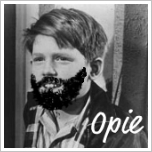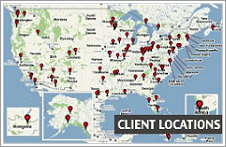 It’s not easy being a manager, especially when the road of good intentions is pitted with potential potholes. Here are ten of the biggest along with advice on how to steer clear:
It’s not easy being a manager, especially when the road of good intentions is pitted with potential potholes. Here are ten of the biggest along with advice on how to steer clear:
When I launched my first full-time business in 1991, I brought a lot to the table: two recently written books, solid experience, a Duke University MBA. There was just one big in-my-face problem: I looked about half my age.If you’ve ever watched those TV reruns of The Andy Griffith Show from the 1960s, you’re familiar with little Opie Taylor. That’s pretty much how I looked — but at age 28. The Opie Syndrome had me in its clutches.
In all of my first meetings with would-be clients, I kept getting the same question: “When did you say you graduated?” People stopped just short of asking for my birth certificate.
So I decided to do what Opie never could. I grew a moustache and beard, hoping that some well-tended whiskers would make a difference. And they did! People stopped asking my age, and new sales began to sprout.
Then I paid a sales visit to someone I’ll call Mr. Smith. He owned a company that trained salespeople, so I was literally selling to an expert on selling.
Two minutes into our meeting, the no-nonsense Mr. Smith leaned toward me and locked his gaze onto the lower half of my face. His stare lasted so long that I began thinking he had spotted an errant Rice Krispie or a shelter-seeking bug. Then his trance broke. He eased back, took a deep breath, and declared: “Shave that thing off. You’ll sell more.”
He said it with such conviction that I almost asked for a razor right then and there. But as I drove away, my reaction got more complicated. I could see the humor in our encounter, but I also saw the serious side. People talk a lot about valuing differences, yet here I was being told to shave mine off.
To vent, I wrote a guest column about diversity for the Cincinnati Enquirer. It told my story of growing the beard and getting pressured to stick with the 90 percent of clean-shaven American males. The article ended with a question: What’s it like to have a prominent difference that can’t be shaved off?
Many people answered, calling and writing to tell me about the challenges brought on by their own differences. Most of these testimonials had to do with workplaces where sameness and conformity are quietly expected. All of their experiences were far more serious than mine.
I also heard from critics, lots of them, most of whom seemed to long for a world of their own chosen familiarity. One irate reader clipped the article from the newspaper, covered it with vulgarities, circled my photographed face with a thick marker, and sent it to my house. “You look like Satan,” he wrote.
It’s true that a beard wasn’t my best look. But to compare me to the prince of darkness?! That one hurt.
The range and intensity of the response got me thinking more deeply about the struggle for diversity, respect, and acceptance. I kept coming back to this: If someone’s calling me Satan just because of a beard, what are they doing to people whose differences are more significant?
I kept the beard for a couple more years. Then one Saturday morning, I spotted my electric razor at the back of a bathroom drawer. Ten minutes later the beard was gone — but twenty years later, my beard-based experience with diversity is still very much with me.
A few days into life with a clean-shaven face, I met another business contact. It was our first face-to-face meeting after several phone conversations, and he seemed surprised as we shook hands. “You look awfully young,” he said.
“Funny you should mention that,” I said. “Let me tell you about my beard.”




